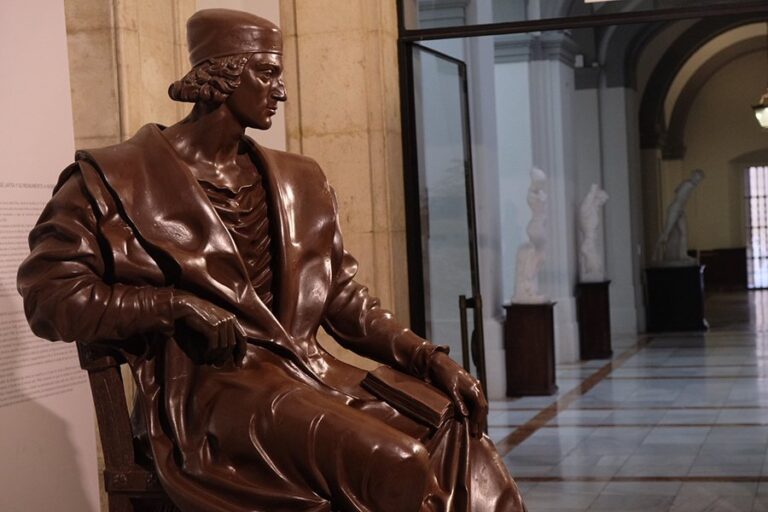Elio Antonio de Nebrija: from academic icon to object of mockery
Professor Lola Pons, of the Department of Spanish Language, Linguistics and Literature at the University of Seville, has just published a study of a satirical work on marriage written in the 17th century by an anonymous author. Joking about courtship or wedding nights has a long tradition in Western literature. However, the distinctive feature of this work is that, to justify many of its arguments, it draws on texts by Elio Antonio de Nebrija.

This satire, which has been found in the Old Collection of the Library of the University of Seville, supports the usual content about brides who are not virgins, mishap-strewn wedding nights and regrets about the betrothal in an academic content born of the scholastic teaching of Latin grammar. Specifically, Ynstruccion para los Novicios del Santo Matrimonio sacadas de las Reglas del Docto Maestro Antonio de Nebrija (Instruction for the Novices of Holy Matrimony taken from the Rules of the Learned Master Antonio de Nebrija) uses fragments from the Introductiones latinae. Nebrija’s Latin grammar was used in formal contexts but also, because of its renown, it had become an orthodox discourse that was a candidate for subversion within the system itself.
This piece could be placed in a tradition that has emerged from the university academic world itself. Since the second half of the 16th century there has been a body of writings mocking the character of the Spanish grammarian. This tradition arose in the 16th century in theoretical works that mocked Nebrija as a character and, even beyond this satire, questioned and attempted to invalidate the methods of teaching Latin that Nebrija had advocated.
Although in recent decades the significance of Elio Antonio de Nebrija has been emphasised on the basis of his contribution as a grammarian of Spanish, works such as this show that, in his own time, Nebrija was regarded primarily as a Latinist. While his Spanish grammar was forgotten and not reprinted until the 18th century, his Latin work, on the other hand, was widely read. And, within Nebrija’s Latin output, the Introductiones latinae was undoubtedly his most widely distributed text.
The humorous use of quotations from Nebrija’s Latin manual is indicative of the strong textual competence of the work’s readers. Its character suggests that it was aimed at an initiated, student audience, most likely a seminary student. The text could not have been understood or appreciated by an unlettered public that did not read Latin.
Furthermore, the lecturer Lola Pons argues that the text must have been intended for distribution in ecclesiastical circles. The use of the concept of ‘instruction’ in the title is a clear indication in this respect, since there were books dealing with the actual instruction of religious novices that bore precisely that word in the title.
Other details of the text could point to the religious and perhaps Andalusian, or even Sevillian, origin of the author and the immediate recipients of the text. Thus, the names Seraphim and Cherubim given to the father-in-law and the bridegroom, respectively, hark back to Christian angeology. Moreover, the bride is made the daughter of “don Seraphín de Almanza”, a surname that is still clearly southern (from the interior of Andalusia and La Mancha). Seville’s own academic milieu witnessed the emergence of other discourses of this kind, such as the Diálogo ortográfico (Orthographic Dialogue, also from the Old Collection of the University of Seville), in which a candidate for a teaching post at the Real Escuela Seminario de San Telmo, located in Seville, criticised the use of primers and spelling books not produced by the Real Academia de la Lengua (Royal Academy of the Language).
Bibliographic information:
Press release from the University of Seville.



